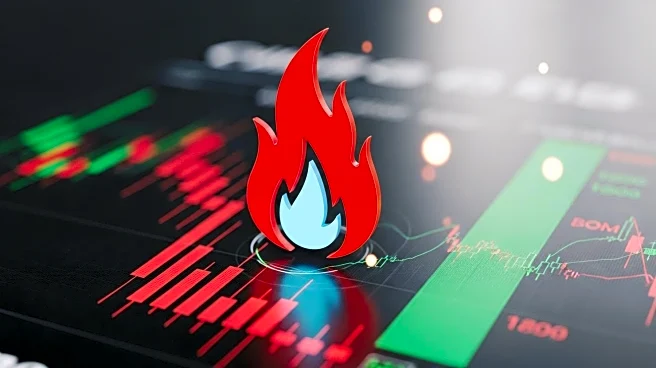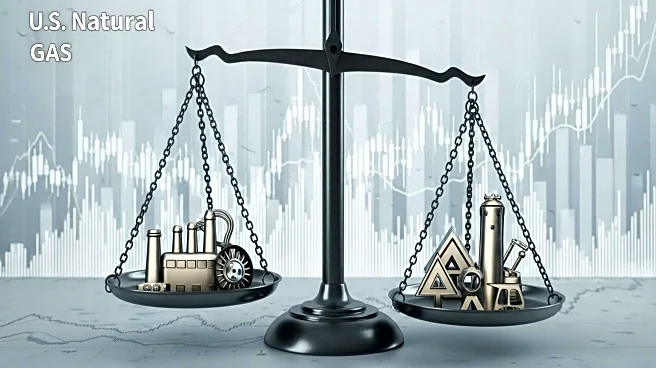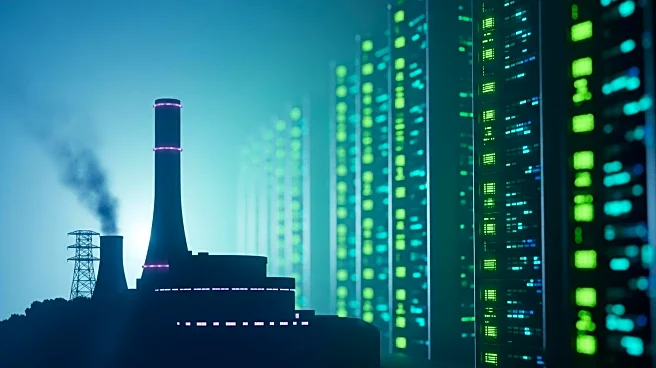What is the story about?
What's Happening?
The U.S. natural gas market is experiencing a significant shift as speculative net positions have turned sharply negative, according to the latest CFTC Commitments of Traders (COT) report for August 2025. This change indicates a bearish sentiment among non-commercial traders, including Managed Money and Swap Dealers, who hold a combined net short position in natural gas futures. In contrast, the Producer/Merchant/Processor/User (PMPU) category maintains a net long position, reflecting commercial hedging and confidence in near-term demand. This divergence highlights a tension between speculative capital betting on continued weakness and commercial players hedging against potential price rebounds.
Why It's Important?
The shift in speculative positions has significant implications for various sectors. Utility stocks, which historically benefit from lower natural gas prices, may see improved margins and earnings predictability. Companies like Dominion Energy and PG&E could capitalize on lower fuel costs and stable cash flows. However, industrial sectors face a complex landscape, as natural gas is a critical input for processes like steel production and chemical manufacturing. While lower gas prices may initially benefit these sectors, any rebound could erode margins. Additionally, the surge in energy demand from AI-driven data centers could stabilize prices, creating a paradox where speculative bets on weakness may be countered by structural demand.
What's Next?
Investors are advised to consider overweighting utility equities with strong natural gas exposure while adopting a cautious stance in industrial equities due to potential volatility in energy markets. Monitoring regulatory shifts and AI infrastructure spending will be crucial, as these factors could alter the trajectory of natural gas demand. The evolving energy landscape will require investors to balance risk and reward, aligning portfolios with structural trends like AI-driven demand and energy transition investments.
Beyond the Headlines
The AI-driven energy demand paradox presents a long-term challenge for both utilities and industrials. Utilities may need to invest in grid modernization and distributed energy resources to accommodate growing demand, while industrials must balance cost efficiency with decarbonization pressures. The interplay between speculative positioning and sector-specific dynamics underscores the need for strategic investment decisions in the face of energy price volatility.
AI Generated Content
Do you find this article useful?














